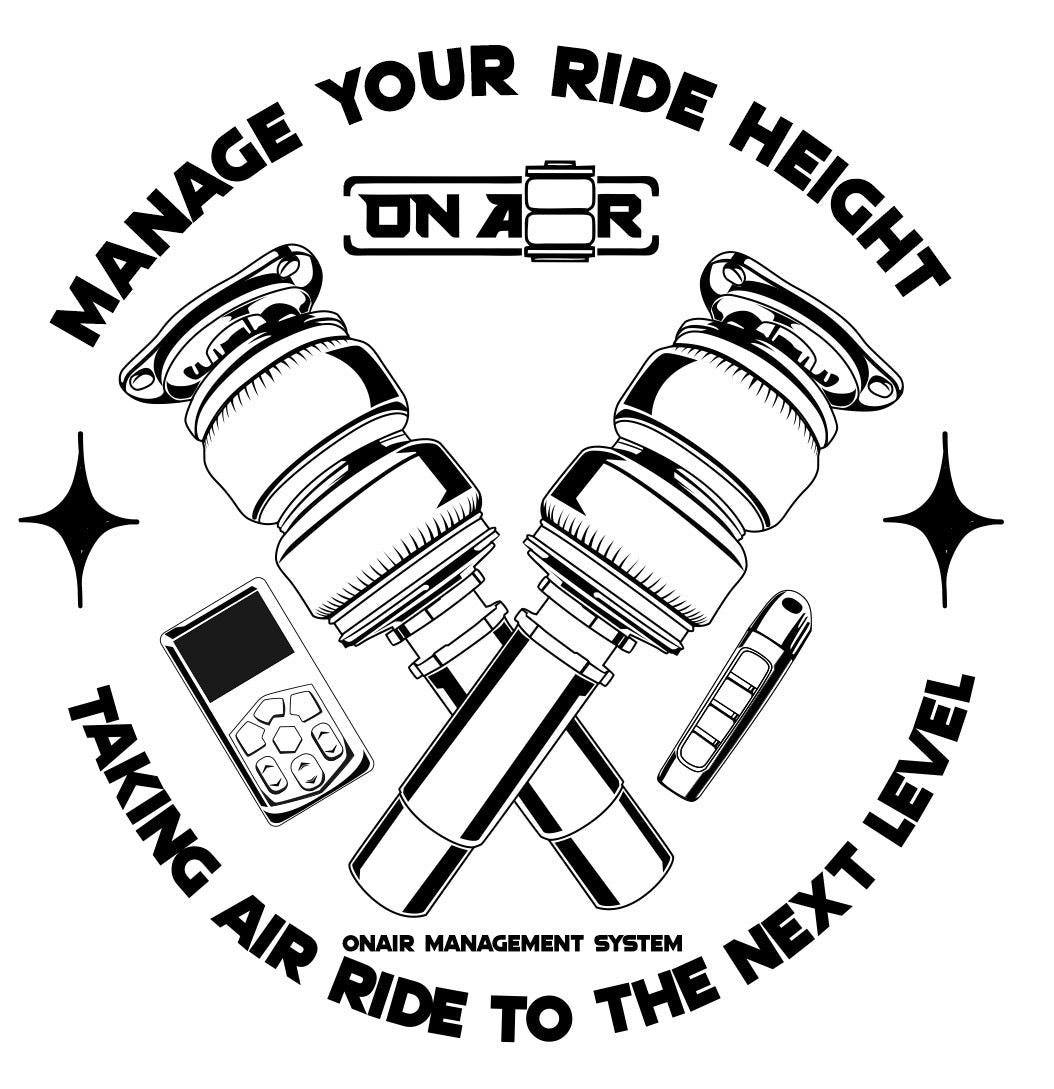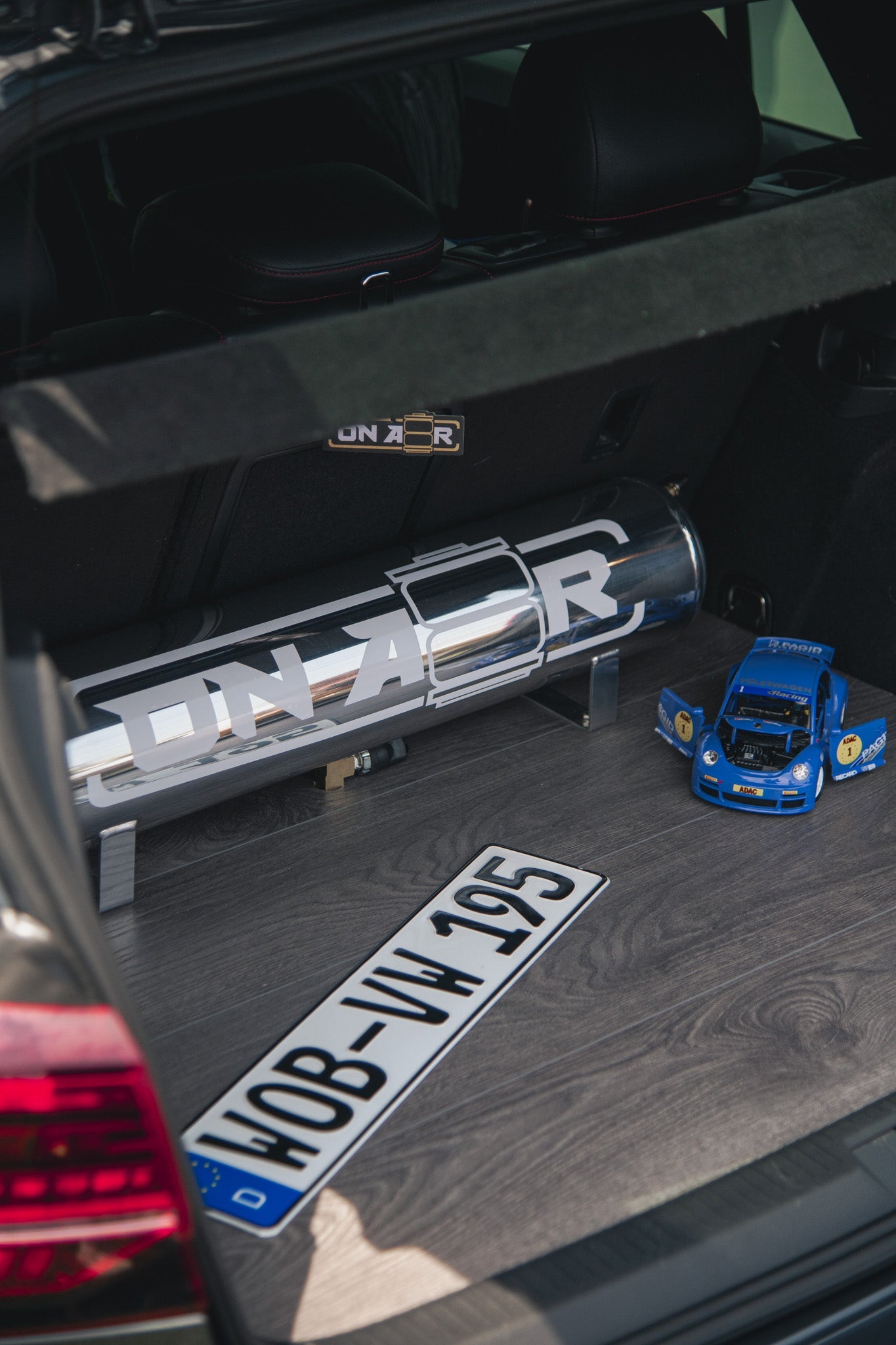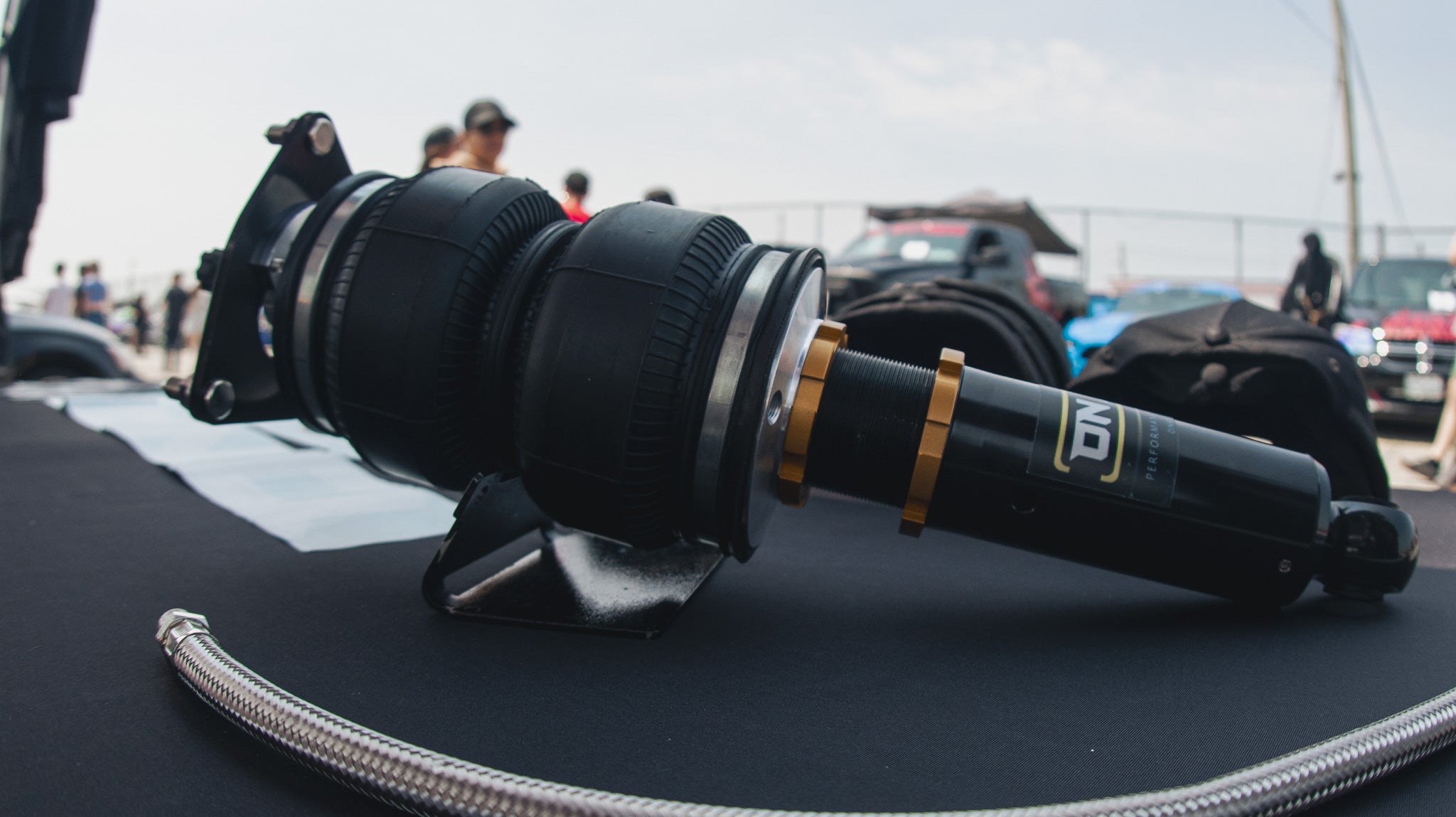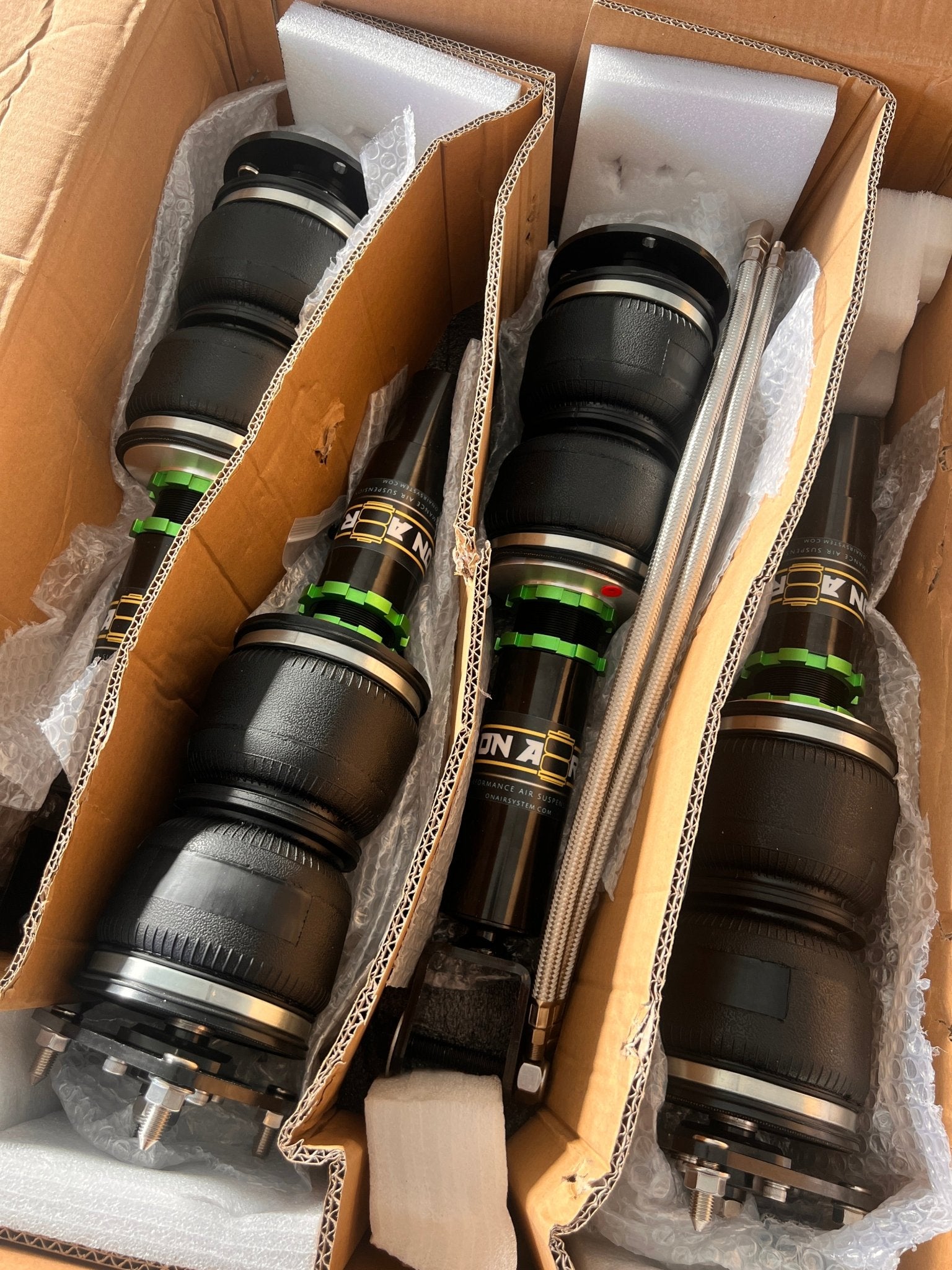When upgrading your vehicle with air suspension, one of the most important decisions is choosing the right tank and compressor setup. This decision can have a significant impact on the performance, responsiveness, and longevity of your air suspension system. At ONAIR, we offer a variety of air suspension tanks and management systems, each designed to meet different needs. In this guide, we will explore the factors that should be considered when choosing the right tank, how compressors play a role, and why the pressure switch rating matters.
### 1. Understanding Air Suspension Tanks: Size and Capacity
#### Why Does Tank Size Matter?
Air suspension tanks serve as reservoirs for storing compressed air, which is used to inflate or deflate the air springs in your vehicle’s suspension system. The size of the tank directly affects how much air is available at any given time. At ONAIR, we offer a variety of tanks, ranging from a compact 1.2-gallon model to larger 4-gallon and 5-gallon seamless tanks.
- **Small Tank (1.2 Gallon)**: This compact tank is ideal for tight spaces and minimalist setups. It’s rated for 200 psi, meaning it can store air at a high pressure, but the small capacity means it can hold a limited volume of air. For drivers who make infrequent adjustments to their suspension or only need minor height adjustments, a 1.2-gallon tank is a great fit.
- **Larger Tanks (4 Gallon and 5 Gallon Seamless Tanks)**: Larger tanks are designed to store more air, making them suitable for more frequent adjustments or vehicles with higher air demands. The seamless design ensures durability and reliability, while the larger capacity means more adjustments can be made without the compressor having to refill the tank as frequently. The key difference between the 4-gallon and 5-gallon tanks is the additional gallon of capacity, which allows for more air storage and longer periods of operation before refilling is necessary.
#### Rated for 200 PSI – What Does This Mean?
Both the 1.2-gallon and the larger tanks are rated for 200 psi. This means that regardless of the size, each tank can safely store air at up to 200 psi. However, the difference between the tanks lies not in the pressure they can handle, but in the total volume of air stored at that pressure. A 5-gallon tank will hold significantly more air at 200 psi than a 1.2-gallon tank, which means the larger tank provides more air capacity for extended usage.
### 2. How Does the Pressure Switch Work?
A critical component of your air suspension management system is the pressure switch, which ensures the system operates within safe parameters. At ONAIR, our management systems come equipped with a pressure switch rated for 145-160 psi. This means that once the tank reaches 160 psi, the pressure switch will shut off the compressor, preventing overfilling and ensuring the system remains safe.
#### But Why Stop at 160 PSI If the Tank Is Rated for 200 PSI?
This might seem counterintuitive at first. After all, if the tank is rated for 200 psi, why not let the compressor fill it to the maximum capacity? The reason is rooted in system efficiency and longevity. Filling a tank to the maximum pressure can put more strain on the compressor, increasing wear and tear over time. By setting the cut-off at 160 psi, the system ensures that there’s enough air for effective suspension adjustments without overworking the compressor. Additionally, for most air suspension setups, 160 psi provides more than enough air pressure for smooth, responsive performance.
### 3. Pairing Tanks with Compressors: What You Need to Know
The compressor is the workhorse of your air suspension system, responsible for generating the air pressure that fills the tank. Choosing the right compressor setup for your tank size is crucial for ensuring optimal performance.
#### Single Compressor vs. Dual Compressors
When installing a smaller tank, such as the 1.2-gallon option, it makes sense to use a single compressor. At ONAIR, we typically pair a 495cc compressor with the 1.2-gallon tank. This compressor size is ideal because it fills the smaller tank quickly without putting unnecessary strain on the system. Adding a second compressor to a 1.2-gallon setup could lead to the compressors cycling on and off too frequently, potentially shortening the lifespan of the compressors and causing excessive wear.
For larger tanks, such as the 5-gallon seamless model, dual compressors are recommended. A larger tank requires more time to fill, and using two compressors helps distribute the workload, filling the tank faster and reducing the runtime of each compressor. This not only speeds up the filling process but also extends the life of the compressors by preventing them from running for extended periods during each cycle.
#### The Impact of Compressor Size on Performance
Using a compressor that is too small for the tank can result in slow fill times, leading to a delay in adjusting your suspension. Conversely, using a compressor that is too large for a small tank could cause the tank to fill too quickly, leading to frequent pressure cut-offs and potentially overheating the compressor. At ONAIR, we’ve carefully matched our compressor offerings with tank sizes to ensure each setup delivers balanced performance.
### 4. How to Choose the Right Setup for Your Needs
When choosing between different tank and compressor setups, it’s essential to consider how you plan to use your air suspension system. Here are a few scenarios to help guide your decision:
- **Minimal Adjustments, Minimal Space**: If you’re only making occasional adjustments to your suspension and space is limited, the 1.2-gallon tank paired with a single 495cc compressor is likely the best fit. This setup provides enough air for infrequent adjustments while keeping the system compact and efficient.
- **Moderate Adjustments, Frequent Usage**: If you plan on making more frequent adjustments or need a system that can handle more air demands, the 4-gallon seamless tank offers a good balance between size and capacity. Paired with dual compressors, this setup provides quicker fills and allows for more adjustments between refills.
- **Maximum Adjustments, Heavy-Duty Performance**: For users who demand the most from their air suspension system, the 5-gallon seamless tank is the top choice. With maximum air capacity and dual compressors, this setup ensures rapid fills, consistent performance, and the ability to handle high air demands without interruption.
### Conclusion
Choosing the right air suspension setup depends on your specific needs, the type of driving you do, and how frequently you plan to adjust your suspension. At ONAIR, we offer a variety of tanks and compressors to fit every scenario, from compact setups for minimal adjustments to larger, high-performance systems designed for frequent use.
By understanding the relationship between tank size, compressor power, and pressure ratings, you can make an informed decision that ensures your air suspension system performs at its best. Explore our full range of air suspension products at [shoponair.ca](https://shoponair.ca) and let us help you create the perfect setup for your ride.
Featured blogs
Learn more from our ONAIR articles

- November 25, 2024
Choosing Between the ONAIR 2V and 4V Management Systems: Which is Right for You? ONAIR offers two exceptional air ride...

- September 13, 2024
When upgrading your vehicle with air suspension, one of the most important decisions is choosing the right tank and...

- March 24, 2024
As winter approaches, driving conditions become increasingly challenging, but with the right preparation and techniques, navigating snowy and icy roads...

- October 15, 2024
When people think about air suspension, they often envision show cars, low stances, and flexing at car meets. But the...

- March 24, 2024
Welcome to Customer Testimonials, where we showcase the experiences and feedback of ONAIR enthusiasts from around the world. From improved...

- February 05, 2024
Air bags and coilovers serve different purposes and excel in different areas, so the choice between them depends on the...

- April 23, 2024
Welcome to ONAIR Automotive Ltd. At ONAIR, we believe that every vehicle deserves to stand out with the ultimate in...
- Choosing a selection results in a full page refresh.
- Opens in a new window.


